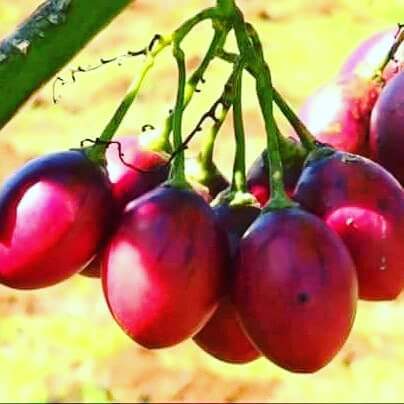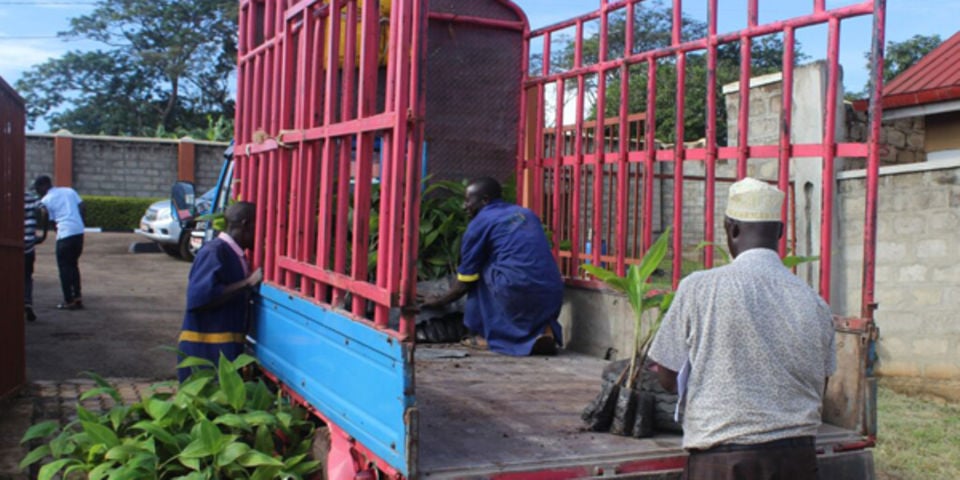Tree tomato farming is gaining momentum in the Kenyan market due to the demand for the fruit, in both the juicing and fresh fruit market.
Tamarillo plants are an attractive, fast growing, semi-woody, small tree that can grow to 15 feet in ideal conditions, but will tolerate pruning to maintain it as a low shrub. The tree usually grows as a single upright trunk with lateral branches. The leaves are large, dark green ovals with pointed tips, making it an attractive plant to add to a small garden.

This fast growing tree will likely begin flowering and bearing fruit within 18 to 24 months. Tamarillo’s fragrant rosy white blossoms hang in clusters from the lateral branches usually from May through October but often year round. Their color and fragrance attracts pollinators allowing as many as six fruit to appear out of each cluster. The egg-shaped fruit is green at first, ripening to yellow, orange, and red or almost purple over a ripening period of six months or more. The ripening process varies within the clusters meaning that harvesting is staggered.
Tamarillos require very little maintenance. You can prune them to control size and shape or to remove branches that have previously fruited. If left in place they will produce inferior fruit the next time on the same branch. Mulching is advised to help maintain moisture in the shallow root zone and can help suppress competitive weedy growth. Regular fertilization with a balanced fertilizer will help keep the trees healthy and vigorous, producing numerous large fruit.
Tamarillo must be harvested very ripe, as close to full maturity as is possible, and it should be eaten quickly thereafter.
If not yet mature, it doesn’t taste so good, and if too young it even becomes difficult to digest.
If the fruits aren’t ripe enough upon harvest, you can let them ripen just like regular tomatoes before eating them.
Pests affecting tree tomatoes
The main pests that may attack your tree tomato include the whiteflies, nematodes, and aphids. Generally, tree tomatoes are pest resistant.
- Whiteflies- These are white-winged insects that suck the sap of your plant. They attack the leaves. The result is downward curling, yellowing and finally the leaves dry.
- Nematodes- They are microscopic parasites found in the soil. When this parasite infects your tree, you will notice swollen and distorted roots that bear knots. As a result, your plants wilts and eventually it may die
- Aphids- These are sap-sucking insects that pierce the lower surface of leaves. They mostly attack tender shoots. If they attack, you will notice curls and twists on the leaves of your plant. Aphids excrete honeydew that forms a sooty mold that affects photosynthesis
Grafted Tree tomato is a fast-growing tree that grows up to 2-5 meters. The tree usually forms a single upright trunk with lateral branches. We graft our tree with ‘muthakwa’ for several reasons.
- Resistant to Nematodes.
- Drought resistant.
- Fast maturing.
- Higher life span.

grafted tree tomato
Requirements:
Land, Manure, Grafted seedlings, Irrigation system, Labour, Pest and Diseases control,
At a good spacing an acre can accommodate 1200 – 1500 plants.
- Require a recommended spacing measuring 6ft by 6ft, then dig dip holes measuring 2ft by 2ft this helps in roots penetration and also to be able to accommodate enough manure.
- Add a bucket of well rotten manure into per hole and mix well with top soil.
- Plant your grafted seedlings by first ensuring you have watered your soil well or plant during rainy season. Add mulching to every stem of your plants.
- In case of a dry season apply irrigation either drip irrigation or bucket irrigation.
- For those that need to grow organically consult your agronomist about organic farming.
- For conventional farming apply NPK fertilizer after two weeks of planting this will ensure faster growth and root development.
- Protect you plant from pest and diseases from early stages by splaying at a good interval depending with the rate of infestation with pesticides and fungicides both protective and curing ones.
- During entire growth season apply CAN fertilizer three times.
- Splay your plants with foliar feed to ensure faster and stronger plants and also during flowering to boost more flowers and ensure they do not drop.






Where can I buy this type of tomato seeds